
Lupine Publishers Group
Lupine Publishers
Menu
ISSN: 2637-4676
Research Article(ISSN: 2637-4676) 
Quality and Yield Performance of Turmeric (Curcuma longa linn.) in Response to Glycoprotein Producing Arbuscular Mycorrhizal Fungal Biostimulant and Traditional Fertilizers Utilization Volume 9 - Issue 5
Kamal Prasad*, Agam Khare and Prateek Rawat
- Absolute Foods, Division of Microbiology, 240-P, Sector-55, Gurugram-122011, Haryana, India
Received: October 8th , 2021; Published: October 26nd, 2021
Corresponding author: Kamal Prasad, Absolute Foods, Division of Microbiology, 240-P, Sector-55, Gurugram-122011, Delhi NCR, Haryana, India
DOI: 10.32474/CIACR.2021.09.000323
Abstract
A field experiment was performed to evaluate the symbiotic capability of arbuscular mycorrhizal fungi (AM fungi) on vital medicinal and multipurpose crop turmeric. Turmeric treated with AM fungi +75% recommended rate of fertilizers (RRF) was recorded superior growth and yield performance over the control (100% RRF) and AM fungi + 50% RRF. Gradual improvement in plant agronomic properties changed into location with time duration. Significantly, a higher increase in rhizome yield was noticed in turmeric while treated with AM fungi with 75% RRF over the control. The present study has a look at implies suitability of AM fungus for reinforcing turmeric growth, yield, essential oil, curcumin contents, and improvement of soil fertility and health in addition to saving of considerable chemical fertilizers cost.
Keywords: AM fungi; Curcuma longa; Chemical fertilizers; oil; Curcumin; Yield
Introduction
Turmeric (Curcuma longa Linn, family Zingiberaceae) is an herbaceous perennial plant, native to Tropical Southeast Asia particularly India. Turmeric is the historic and sacred spice of India referred to as ‘Indian saffron is an essential cash spice crop grown in India. It is utilized in diversified forms as a condiment, flavouring, and colouring agent and as a principal ingredient in Indian culinary as curry powder. It has anti-cancer and anti-viral activities and subsequently reveals used in the drug and cosmetic industry. The turmeric plant incorporates a yellowish colouring known as curcumin, an acrid volatile oil, starch, chlorides of calcium, woody fibre, and gum. The acrid oil is known as turmerol and has an aromatic odour. Alkaloids of oxalic acid also are present in yield crystals of potassium oxalate. Kumkum, famous with each housewife in India, is likewise a by-product of turmeric. It is also utilized in a hot drink referred to as golden milk made with milk and is a traditional Indian recipe utilized maximum of the Indian house in addition to worldwide. It is vital usages for spiritual and ceremonial occasions. The increasing demand for natural products as food additives makes turmeric an ideal product as a food colorant. Turmeric has been utilized in Asia for centuries and is a first-rate part of Ayurveda, Siddha traditional, Chinese, and Unani medicine [1] and the animistic rituals of Austronesian peoples [2- 3]. Turmeric powder is about 60-70% carbohydrates, 6-13% water, 6-8% protein, 5-10% fat, 3-7% dietary minerals, 3-7% essential oils, 2-7% dietary fibre, and 1-6% curcuminoids [4]. India is the largest producer, consumer, and exporter of turmeric in the global. The worldwide production of turmeric is around 11 lakh tons per annum. India dominates the world production scenario contributing 78 % followed by China (8%), Myanmar (4%), and Nigeria and Bangladesh collectively contributing to 6% of the worldwide production. India is the global leader in value-added products of turmeric and exports. The United States of America imports 97% of its turmeric requirement from India. Indian turmeric is taken into consideration the exceptional within the global market due to its excessive curcumin content.
Plant roots are the ecological niches of many microorganisms that are confined to the soil. AM fungi are symbiotic affiliation among plant roots and soil fungi which expand the extensive fungal hyphal network in roots of more than 95% of the terrestrial plants. AM fungi are the maximum common subgroup of endo mycorrhizae which on colonization, improve the growth and boom productivity of crop plants inclusive turmeric [5-18]. The highest impact of AM fungal symbiosis at the host plant happens while it’s far phosphorus-deficient through up taking it via the mutualistic relation [9-10, 19-23]. It has been detected through many researchers that AM fungi are a crucial component of soil microbial mass and regulate numerous vital biological processes to increase the growth and productivity of many crops [7, 14-17, 23-27]. Nitrogen (N) and Phosphorus (P) are significant nutrients elements required through plants. It is the main part of all amino acids that are the building blocks of all proteins, inclusive of the enzymes, which manage almost all biological processes. It is likewise important for carbohydrate use inside plants. The useful impact of AM fungal inoculation in plant nutrient uptake has been studied extensively [12-17, 22, 28-36]. Among the benefits of AM fungi to plants consisting of extended macro and micronutrients uptake, tolerance to drought, and synergistic interplay with different useful soil microorganisms. However, there is very few statistics at the contributions of AM fungi on turmeric. This looks towards figuring out the impact of reducing dose of chemical fertilizers (CF) combination with AM fungi and RRF on the growth, quality yield, oil, and Curcumin contents of turmeric.
Material and Method
Field Preparation and Experimental Design
The experimental land was opened with a power tiller and kept exposed to the solar earlier than the following ploughing. It was prepared afterward by ploughing and cross ploughing followed by laddering. Turmeric was sown in July and the experimental bed’s size was 10.0 x 10.0 meters with four replicates in every treatment in a randomized block design (RDB). Recommended cultural operations have been finished to all plots through the entire cropping duration to make certain a healthy crop. Turmeric was showing through ridges and furrows technique in the field. Ridges have been 50 cm apart. Short duration variety of Pratibha (Turmeric) rhizome was used for cultivation. Turmeric was grown with a spacing of 50cm x 25cm. Turmeric plantations have been accomplished through rhizome cuttings. The cuttings were planted to parallel rings with a yellow colour on the outside and reddish-brown on the inside. One rhizome was planted in every pit. Split mother rhizomes weight about 33-44gm was used for planting. Seeds were applied @ 2.5 t/ ha. Experiments were set up two consequent years in the same site for the improvement of productivity in addition to soil health.
AMF Inoculum and Chemical Fertilizers Applications
Turmeric was treated with AM fungi @ 20 lakhs effective propagules/ha on the time of planting. RRF had been carried out in two split doses and irrigation was provided as per the requirement of the plants. Normal environmental conditions were provided for plants’ growth and development. Morphological characters were recorded in January. The crop was harvested during the second week of February and yield, essential oil, and curcumin content was recorded after harvest. The essential oil content (% V/W) in turmeric was determined using Clevenger’s equipment wherein 25 g of turmeric powder changed into distilled for 4.5 h and the quantity of essential oil was measured. The curcumin content was determined by the method of Thimmaiah [37]. Various stage of chemical fertilizers (CF) was carried out in exclusive treatment within the form of NPK N-P-K @ 60-50-120 Kg/h (100% RRF) i.e., Urea – SSP – MOP @1042 – 888 – 265 g/cent (100%); Urea – SSP – MOP @781.5 – 666 – 198.72 g/cent (75%): Urea – SSP – MOP @521 – 444 – 133.5 g/cent (50%). N (Urea) become additionally was also applied as a top dressing in equal splits as per recommendations. There were three treatment combinations for turmeric i.e., control 100% RRF, AM fungi +75% RRF and AM fungi+50% RRF.
Physicochemical analysis of Rhizospheric soil samples
Air-dried soil samples were used for distinctive physicochemical analysis. pH becomes decided in 1.25 (w/v) solutions of samples in water and the same was used for the dedication of electrical conductivity (EC). Air-dried samples were processed (addition of 40% NaOH and distillation) using a Kel Plus nitrogen estimation system (Class DX, Pelican Equipment’s) accompanied through the dedication of available nitrogen through titration with 0.02N H2SO4 [38]. Available phosphorus was decided through Olsen’s method [39] and available potassium was determined in a 1 N ammonium acetate extract using a flame photometer [40].
Statistical Analysis
Observations of physicochemical properties of soil, plant growth and yield, oil, and curcumin content were analysed using SPSS (SPSS Inc. version 17.0). Results were subjected to one-way analysis of variance and the significant difference was determined according to Duncan’s Multiple Range Test at a significant level of P<0.05.
Results and Findings
Physicochemical Properties of Soil (Zero time and at Final Harvest)
pH is taken into consideration as a master variable in soils because it controls many chemical processes that take vicinity in the soil environment. It particularly influences plant nutrient availability with the aid of using controlling the chemical forms of the nutrients. Alternation in pH up to 7.33 becomes observed after the final harvest (Figure1). The pH of soil becomes noticed lowering with time because of mycorrhiza treated crop cultivation activities. Decrease in electrical conductivity became observed after harvesting (Figure 2) Available nitrogen in the soil is directly associated with soil organic matter. The gradual increase in nitrogen became because of the increase in soil organic matter and the microbial activities which make nitrogen available from organic matter to the soil. A significant increase (p<0.05) in available nitrogen became noticed after the harvest of crops (Figure 3). Available phosphorus content became observed lower (p<0.05) in cultivated soil, and it can be because of uptake of phosphate with the aid of using the cultivated plants (Figure 4). The sharp increase in potassium content became recorded after harvesting. Various factors which include weathering, upward translocation of soluble ions through capillary action, involvement from the degradation of plants litters can be responsible for such variation of potassium content in soil (Figure 5).
Morphology and Yield of Turmeric
Table 1: Morphological observation of Turmeric height, girth and leaf area and yield ((Mean ± SE) during two cropping season (n=20)

±SE-Std error; Values in a column followed by the same letter are not significantly different at P< 0.05 according to DMRT
Significant (p<005) variation was determined withinside the overall performance of nutrient dose and AM fungal inoculation in turmeric (height, girth, leaf area, and yield) (Table 1and 2). Significant increases (p<0.05) were noticed in height, girth, leaf area and yield in AM fungi +75% RRF treated plant as compared to control (100% RRF) and AM fungi + 50% RRF. Maximum height, girth, leaf area, and yield were observed in AM fungi +75% RRF following with the aid of using control (100% RRF) and AM fungi + 50% RRF (Table 1 and 2). Significantly maximum height (97.33cm), girth (20.30cm), leaf area (1691cm2), and rhizome yield (21.54 t/ ha) were noticed in AM fungi + 75% RRF treated plots in secondyear cultivation (31.10% increase yield) as compared to first-year control. An almost equal trend was recorded in AM fungi +75% RRF as compared to control and AM fungi +50% RRF in the second year’s experiments. Improved yield changed into observed in AM fungi +75% RRF treated turmeric as examined to manipulate in first and second respectively and save the 25% RRF in addition to soil pollution.
±SE-Std error; Values in a column followed by the same letter are not significantly different at P< 0.05 according to DMRT.
Essential oil and Curcumin content
Results revealed that AM fungi inoculation prompted nutrients uptake at much less fertilizer utility in Turmeric. AM fungi additionally impact the increase the essential oil and curcumin contents of turmeric. Essential oil and curcumin content were higher in AM fungi +75% RRF treatment as compared to control and AM fungi +50% RRF treatment in each year. The maximum oil content turned in to determined withinside the plants obtained the AM fungi + 75% RRF; this finding turned into statistically significant while as in comparison to the control (100% RRF) and AM fungi + 50% RRF (Figure 6). The maximum curcumin contents were observed in mycorrhiza+75% RDF treated plants and minimum in control and AM fungi + 50% RRF (Figure 7). The impact of AM fungi on oil and curcumin content of turmeric turned into substantial in each year experiments. Increased rhizome yield treated with AM fungi mediated rhizome planting material is probably attributed to higher crop growth in terms of quick emergence, better plant height, greater leaf area index, and tillers consistent with the plant which intercepted extra photosynthetically active radiation and led to better values of yield attributing characters which in the long run contributed towards higher yield of the crop. AM fungi help on translocation and mobilization of assimilates and nutrients are greater in AM fungi mediated mother rhizome thereby making the mother rhizomes qualitatively and quantitatively superior. Thus, the plants because of mother rhizomes are extra vigorous and have higher yield compared to control. Significantly higher fresh rhizome yield because of mother rhizome plant material turned into additionally recorded with the aid of using Oladiran and Olajire [41]. It additionally determined that the utility of mycorrhiza with N enhances the P content in the biomass. This might be related to an increase in the acquisition of P because of mycorrhiza utilization [3, 28, 34, 42]. The highest biomass and rhizome yield resulted from the utilization of 75% RRF with mycorrhiza in each year’s experiments.
Conclusion
Overall assessments of the existing facts without a doubt imply that inoculation of AM fungi can decorate the vegetative growth, overall yield, and essential oil in addition to curcumin contents in turmeric with much less use of CF. One of the factors responsible for the increase in yield of a mycorrhized plant can be because mycorrhiza assisted enhanced uptake of macro and micronutrients from soil to plant. Mycorrhizas convert a much less soluble form of soil nutrient to a soluble form and make it without problem to be had to host plants. Also, the promotion of mycorrhizal biofertilizer has the advantage of permitting decreased nutrient inputs to save the environment. Economize on fertilizer use in turmeric crop production offering a sustainable and environmentally more secure replacement and farmers ought to inspire the usage of mycorrhizal biofertilizer for field assessment. The present study revealed that seed/seedlings treated with AM fungi can play a major role in decreasing CF costs in sustainable production systems. From this look at, it can conclude that the usage of AM fungal inoculum ought to lessen the quantity of CF had to produce turmeric on account that increased plant growth parameters, Oil and curcumin content and enhance soil health had been acquired whilst 75% RRF turned into carried out to mycorrhizae inoculated plants and this turned into similar to control plants dealt with 100% RRF. Such exercise ought to enhance the socio-economic condition of turmeric growers and minimize the crop risk as nicely reduced the CF cost and additionally save the environmental pollutions.
Conflict of Interest Statements
There is no conflict of interest.
References
- Chattopadhyay I, Kaushik B, Uday B, Ranjit KB (2004) Turmeric and curcumin: Biological actions and medicinal applications. Current Science Volume 87 (1): 44–53.
- McClatchey W (1993) Traditional use of Curcuma longa (Zingiberaceae) in Rotuma. Economic Botany 47 (3): 291–296.
- Kikusawa Ritsuko, Reid Lawrence A (2007) Proto who utilized turmeric, and how? In: Siegel Jeff, Lynch John, Eades Diana (Eds.), Language Description, History and Development: Linguistic indulgence in memory of Terry Crowley. John Benjamins Publishing Company 339-352.
- Nelson KM, Dahlin JL, Bisson J (2017) The Essential Medicinal Chemistry of Curcumin: Miniperspective. Journal of Medicinal Chemistry Volume 60 (5): 1620-1637.
- Prasad K (1993) Studies on ecological factors affecting vesicular arbuscular mycorrhizal infection in Sugarcane. Ph.D. Thesis, B.R. Ambedkar Bihar University, Muzaffarpur, Bihar, India.
- Fagbola O, Osonubi O, Mulongoy K (1998) Contribution of arbuscular mycorrhizal (AM) fungi and hedgerow trees to the yield and nutrient uptake of cassava in alley-cropping system. Journal of Agricultural Sciences 131: 79-85.
- Prasad K (2013) Arbuscular mycorrhizal fungus plays a major role in agriculture and natural ecosystems to improve production in sustainable manner. In: Jamaluddin, Singh AK (Eds.), Microbes and Sustainable Plant Productivity. Scientific Publication (India) Jodhpur, India : 113-138.
- Prasad K (2015) Biofertilizers: A new dimension for agriculture and environmental development to improve production in sustainable manner. Journal of Basic and Applied Mycology 11(1& II): 5-13.
- Prasad K (2017) Biology, diversity, and promising role of mycorrhizal entophytes for green technology. In: Maheshwari DK (Ed.), Endophytes: Biology and Biotechnology, Volume 1, Series Sustainable Development and Biodiversity 15. Springer International Publishing AG, Switzerland: 267-301.
- Prasad K (2020) Positive Importance of Arbuscular Mycorrhizal fungi for global Sustainable Agriculture and Environment Management for green technology. Current Investigations in Agriculture and Current Research Volume 9(2): 1182-1184.
- Gautam SP, Prasad K (2001) VA mycorrhiza-Importance and biotechnological application. In: Maheshwari DK and Dubey RC (Eds.), Innovative Approaches in Microbiology. Bishon Singh Mahendra Pal Singh, Dehradun, India: 83-114.
- Prasad K (2010) Responses of dual inoculation of arbuscular mycorrhizal fungi on the biomass production, phosphate, roots, and shoots phenol concentrations of Terminali arjuna under field conditions. Mycorrhiza News Volume 22(2): 13-17.
- Prasad K Warke RV, Khadke K (2019) Management of soilborne pathogens to improve productivity of pulses using organic technologies for sustainable agriculture. International Journal of Research and Analytical Reviews Volume 6(2): 82-101.
- Prasad K (2021) Impact of biological fertilizer arbuscular mycorrhizal fungi and conventional fertilizers mobilization on growth, yield, nutrients uptake, quercetin and allin contents in allium crops cultivation under field conditions in semi-arid region of India. South Asia Journal of Experimental Biology 11 (1): 15-26.
- Prasad K (2021) Arbuscular mycorrhizal fungi and plant collaborations influences ecology and environmental changes for global sustainable development. Journal of Ecology and Natural Resources 5(1): 1-16.
- Prasad K (2021) Effect of dual inoculation of arbuscular mycorrhiza fungus and cultivar specific Bradyrhizobium japonnicum on the growth, yield, chlorophyll, nitrogen and phosphorus contents of Soybean (Glycine Max (L.) Merrill.) grown on Alluvial Soil. Journal of Innovation in Applied Research 4(1): 1-12.
- Prasad K (2021) Influence of arbuscular mycorrhizal fungal biostimulants ad conventional fertilizers on some solanaceous crops for growth, productivity, and nutrient stoichiometry under field conditions in semi- arid region of Maharashtra, India. Journal of Experimental Biology and Agricultural Sciences 9(1): 75-86.
- Prasad (2021) Potential impact of seed coating with beneficial microorganisms to meticulousness sustainable organic agriculture for quality nutritive food production for modern lifestyle, improve global soil and environmental health towards green technology. Aditum Journal of Clinical and Biomedical Research Volume 2(4): 1-9.
- Liu A, Plenchette C, Hamel C (1999) Soil and water providers: How arbuscular mycorrhizal mycelia support plant performance in a resource limited world. In: Hamel C, Plenchette C (Eds.), Mycorrhiza in Crop Production. The Haworth Press Inc. P: 37-66.
- Goivannetti M, Sbrana C, Avio L (2002) Arbuscular mycorrhizal fungal mycelium: from germlings to hyphal networks. In: Gianinazzi S, Schueoo H, Barea JM, Haselwandter K, Birkhauser Basel (Eds.), Mycorrhizal Technology in Agriculture from Genes to Bioproducts 49-58.
- Mishra RK, Chaudhary R, Aggarwal N, Prasad K, Adholeya A (2013) Arbuscular mycorrhizal fungi boosts crop production with reduced chemical fertilizers input. Proc. of 7th International conference on Mycorrhiza (ICOM7) Mycorrhiza for All: An Under-Earth Revolution, Tata Energy Research Institute, IHC, New Delhi 6-11: 210.
- Prasad K, Pandey AK (2012) Mycorrhizal symbiosis: A new dimension for agriculture and environmental development to improve production in sustainable manner In: Bagyaraj DJ, Tilak KVB R, Kehri HK (Eds.), Microbial Diversity and Function. India Publishing Agency, New Delhi, India, 389-402.
- Prasad K (2000) Occurrence of vesicular arbuscular mycorrhizal fungi in some cultivated crop plants. In: Maheshwari DK, Dubey RC, Prasad G, Navneet (Eds.), Microbes: Agriculture, Industry and Environment. Bishen Singh Mahendra Pal Singh Publishers, Dehra Dun 65-69.
- Mosse B (1973) Plant growth response to vesicular-arbuscular mycorrhizae. X. response of Stylosanthes and maize to inoculation in unsterile soils. New Phytologist 78(2): 277-288.
- Prasad K, Deploey JJ (1999) Incidence of arbuscular mycorrhizae and their effect on certain species of trees. Journal of the Pennsylvania Academy of Science 73(3): 117-122.
- Yamawaki K, Matsumura A, Hattori R, Tarui A, Hossain MA, Ohashi Y, Daimon H (2013) Effect of inoculation with arbuscular mycorrhizal fungi on growth, nutrient uptake and curcumin production of turmeric (Curcuma longa L.). Agricultural Sciences 4(2): 66-71.
- Prasad K (2021) Advantages and nutritional importance of organic agriculture produces food on human, soil and environmental health in modern lifestyle for sustainable development. Aditum Journal of Clinical and Biomedical Research 5 (2): 1-7.
- Osonubi O, Atayese MO, Mulongoy K (1995) The effect of vesicular-arbuscular mycorrhizal inoculation on nutrient uptake and yield of alley cropped cassava in degraded Alfisol of south-western Nigeria. Biological Fertile Soils 20(1): 70-76.
- Prasad K (1997) Improvement of biomass yield of Terminalia arjuna L. through vesicular arbuscular mycorrhizal fungi (Glomus fasciculatum) under nursery and field condition. Journal of Phytological Research 10(1-2): 39-41.
- Prasad K (1998) Effect of Glomus fasciculatum VAM form and Rhizobium on biomass yield and nutrient uptake of Dalbergia sissoo L. Journal of Tropical Forestry 14(111): 143-148.
- Gautam SP, Prasad K (2000) Effect of Glomus macrocarpum AMF on the fiber strength properties and production of holocellulose, hemicellulose and cellulose by Dendrocalamus strictus under field conditions. Journal of Phytological Research 13(1): 35-40.
- Ferrol N, Barea JM, Azcon-Aquilar C (2002) Mechanisms of nutrient transport across interfaces in arbuscular mycorrhizas. Plant and Soil 244: 231-237.
- Barea JM, Azcon R, Azcon-Aquilar C (2002) Mycorrhizosphere interaction to improve plant fitness and soil quality. Antonie van Leeuwenhoek 81(1-4): 343-351.
- Kwapata MB, Hall AE (1985) Effects of moisture regime and phosphorus on mycorrhizal infection, nutrient uptake, and growth of cowpeas (Vigna unguiculata L.). Field Crops Research 12: 241-250.
- Prasad K, Meghvansi MK, Harwani D, Mahna SK, Werner D (2005) Synergistic effect of arbuscular mycorrhizal fungi and Bradyrhizobium japonicum on growth, yield, and nutrient status of Soybean (Glycine max (L.) Merrill). Anusandhan 1: 23-29.
- Meghvanshi MK, Prasad K, Harwani D, Mahna SK (2008) Response of soybean cultivars towards inoculation with three arbuscular mycorrhizal fungi (AMF) and Bradyrhizobium japonicum in alluvial soil. European Journal of Soil biology 44(3): 316-323.
- Thimmaiah SK (1999) Standard Methods of Biochemical Analysis, Kalyani Publishers, New Delhi.
- Subbiah BV, Asija GL (1956) A Rapid Procedure for the Determination of Available Nitrogen in Soils. Current Science 25: 259-260.
- Olsen SR, Cole CV, Wantabe FS, Dean LA (1954) Estimation of available phosphorus in soils by extraction with sodium bicarbonate. Cric US Agric 939.
- Singh D, Chhonkar PK, Dwivedi BS (2007) Manual on Soil, Plant and Water Analysis. Westville Publishing House, Delhi 1-200.
- Olaleye O, Fagbola O (2020) Quality and yield of turmeric (Curcuma longa linn.) in response to mycorrhiza and nitrogen application. Amazonian Journal of Plant Research 4(2): 587-593.
- Prasad K, Kaushik S (2004) Ecology, physiology, biochemistry, and taxonomy of arbuscular mycorrhizal fungi. In: Gautam SP, Bansal YK, Pandey AK (Eds.), Biological diversity: current trends. Shree Publication & Distributors, New Delhi 134-141.




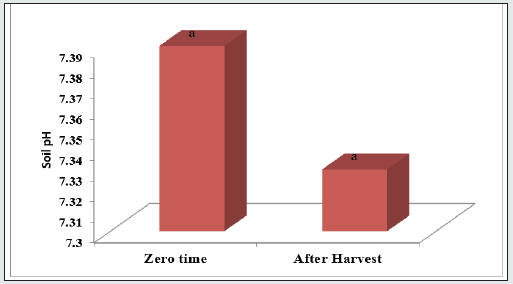
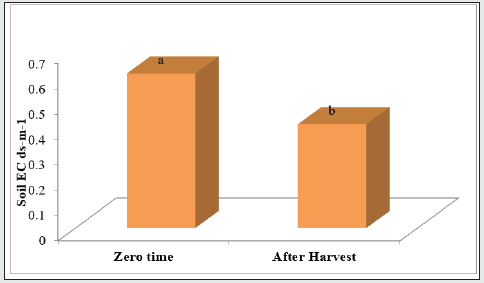
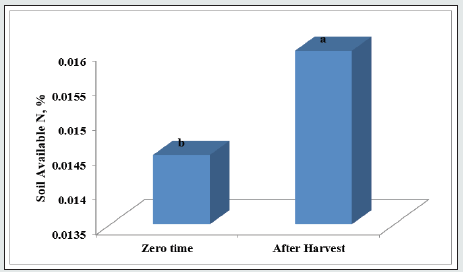
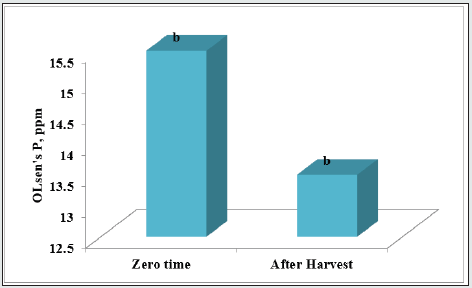
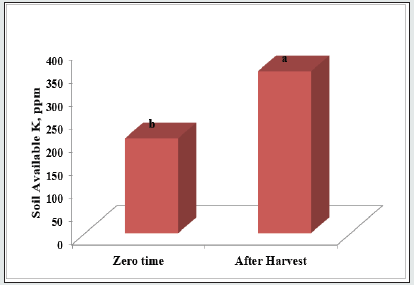

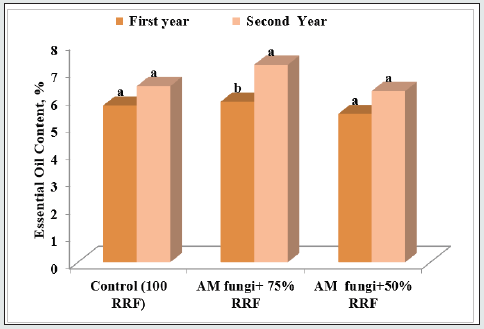












.png)
.jpg)

